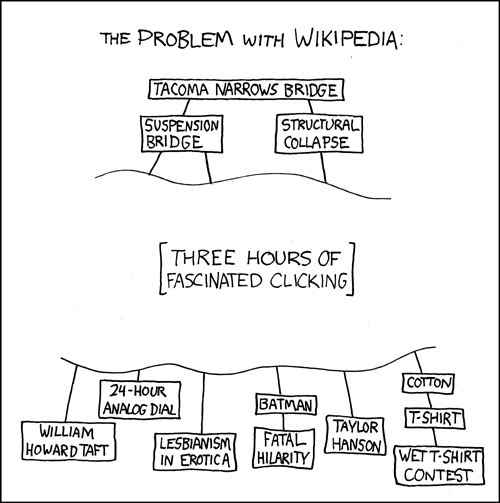Picture this: a world where stick figures, mathematics, science, and dry wit combine to form a unique concoction of pop culture satire and commentary. Welcome to the world of xkcd, the brainchild of former NASA roboticist, Randall Munroe.
From its humble beginnings in the early 2000’s, xkcd has consistently provided sharp, insightful, and often hilarious commentary on topics ranging from technology and science to everyday life and love. Despite (or perhaps because of) its simple stick-figure artwork, xkcd has found a lasting place in the realm of pop culture, its comics frequently shared and discussed across social media, tech forums, and even academic papers.
So, what’s the secret sauce? How has this humble comic strip with its unassuming stick figures and stripped-down visuals managed to captivate us for almost two decades?
Let’s start from the beginning.
p.s. if you prefer to watch a video, I will post link to it here:
The Birth of XKCD
XKCD, described as “a webcomic of romance, sarcasm, math, and language,” began as scribbles in the margins of Munroe’s school notebooks. The title “XKCD” is not an acronym but a word without a phonetic pronunciation, reflecting Munroe’s love for the unconventional. The comic strip, since its inception in 2005, has grown into a cultural phenomenon, adored by millions around the globe.
A Dose of Nerdy Charm
First off, xkcd is unabashedly nerdy. Munroe, a former NASA roboticist, brings his love for science, technology, math, and all things geeky to the forefront. But far from being an esoteric echo chamber, xkcd has a knack for making complex concepts accessible and hilariously relatable. Whether it’s explaining the Saturn V rocket using only the 1000 most commonly used English words or giving us a laugh with relatable programming woes, xkcd blends humour and education like no other.
The Art of Simplicity
Known for its simplistic art style, xkcd is a masterclass in visual storytelling. The lack of intricate artwork means every line, every curve matters, adding to the narrative weight. It gives clout to the idea that sometimes less truly is more. Who knew stick figures could convey such profound ideas or evoke such strong emotions?
In the world of analytics, where the vast amount of data can be overwhelming, xkcd’s ability to distill complex ideas into brief panels resonates. xkcd’s stick figure art might be simple, but its impact is anything but.
A Slice of Life, Served with a Side of Sarcasm

While we revel in the scientific discourses and existential quandaries, let’s not forget the relatable everyday scenarios that xkcd expertly caricatures. From the pitfalls of online dating to the procrastination vortex of Wikipedia rabbit holes, Munroe has a knack for capturing the absurdity and hilarity of modern life, often served with a side of delightful sarcasm.
An Internet Zeitgeist

Munroe’s work has made an indelible impact on internet culture. His comic “Duty Calls” gave birth to the popular phrase “Someone is wrong on the Internet,” and his approach to password strength through the comic “Password Strength” has influenced internet security strategies in the past.
His comic “Click and Drag” (Comic #1110), an enormous, explorable world hidden beneath a static comic panel, inspired similar interactive works online.
The comic’s playful exploration of modern tech phenomena has also led to the creation of “what if?” – a separate section on the xkcd website where Munroe answers hypothetical science questions with a mix of real physics and humor. This section was so popular it led to Munroe’s book of the same name, further cementing his impact on internet culture.
Open-Source & Collaboration Encouraged
The comic’s open-source ethos, allowing anyone to share and play with its content, embodies the collaborative spirit of the internet. XKCD comics are licensed under a Creative Commons license, allowing fans and researchers to use the comics in a variety of ways. This has led to some pretty cool projects, like the XKCD Comic Similarity Analysis and XKCD Comic Classification.
The Man Behind the Comic (A Lasting Legacy)
Despite his fame, Munroe remains down-to-earth and maintains a low-profile online presence. He’s known for his humility, stating in an interview that he’s just “someone who makes things on the internet.” His comics often portray a sense of wonder and curiosity about the world, reflecting his own approach to life.
In the fast-paced world of the internet, where trends come and go at the speed of a tweet, xkcd has remained a constant. Munroe’s unique blend of good humor, intellect, and a keen understanding of both the idiosyncrasies of internet culture and the intricacies of science and tech has resulted in a comic that is not just a passive observer of pop culture but an active participant in it, shaping discussions and bringing complex ideas to the forefront of popular discourse.
In the end, xkcd isn’t just a webcomic; it’s a pop culture pacesetter, a testament to great storytelling and proof that sometimes, stick figures can say more than a thousand words.





